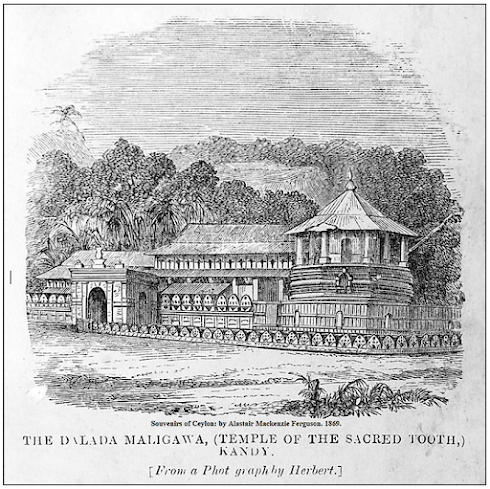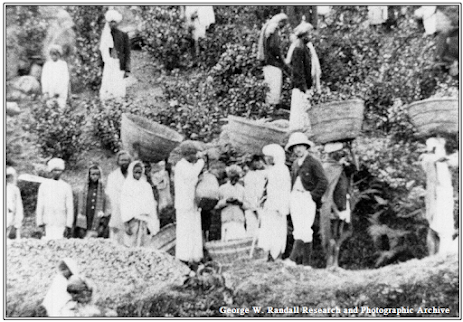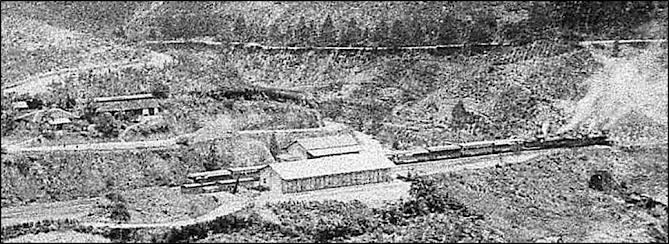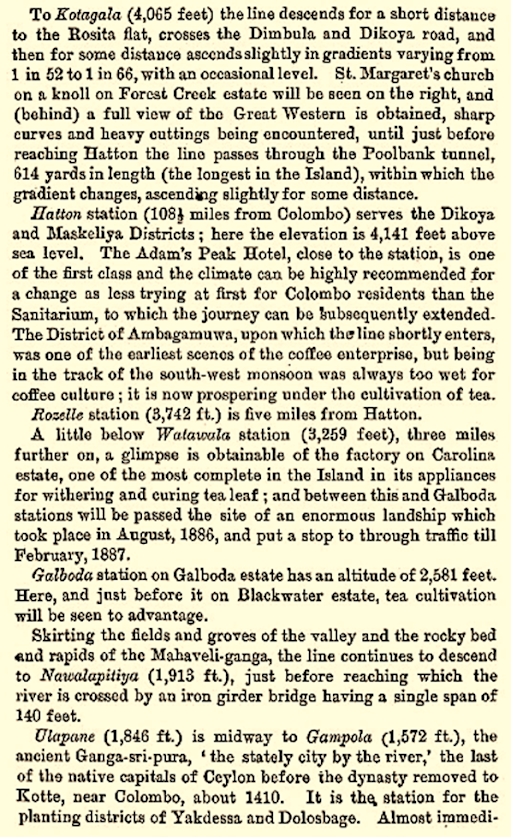Ceylon / Colombo, Kandy, Newara Eliya
GEORGE BULLOUGH – WORLD TOUR 1892-1895
GEORGE BULLOUGH – WORLD TOUR 1892-1895
Written from first-hand research and illustrated from his personal archive by
George W. Randall co-founder in July 1996 and former
Vice Chairman Kinloch Castle Friends' Association.
*** ***
*** *** ***
*** *** *** *** ***
*** ***
George Bullough
and Robert Mitchell arrived at Colombo, Ceylon, (today Sri Lanka),
on the 23rd October
1892.
The twenty volume photographic record of their three-year long world
tour
is in the library at Kinloch Castle, Scotland. Bullough's Highland home.
Article 4 of 28 as published in the Accrington Gazette, Saturday 23 May 1896.
*** *** *** *** *** *** *** *** *** *** *** ***
*** *** *** *** *** *** *** *** *** *** *** ***
The world they experienced
was very different to life we see today in the 21st Century.
Crossing oceans
by steam ships which still carried a full complement of canvas sails,
travelling on land by steam train, horseback, rickshaw or bullock cart, they
visited many of the world’s major cities, including San Francisco, Sydney,
Peking, Nagasaki, Delhi and Cape Town. They also visited what
at the time were sites of recent human conflict:- India (Cawnpore 1857); South Africa (Zululand - Isandlwana and Rorke's Drift 1879); Australia (Ballarat, - Eureka Stockade 1854);
these and more are recorded in this unique
collection of newspaper articles and photographs.
I am indebted to
Accrington Library
for supplying me with photo-copies of the
twenty-eight articles published in the
Accrington Gazette between 2 May and 12 December 1896 describing their travels which I have re-typed and hereby post without alteration.
for supplying me with photo-copies of the
twenty-eight articles published in the
Accrington Gazette between 2 May and 12 December 1896 describing their travels which I have re-typed and hereby post without alteration.
Please bear in mind the text reflects attitudes of the time, some of which are unacceptable today!
The end of each
published article,
(this
being number 4 of 28), you will find numbered
Explanatory
Notes relating to the text.
Written
from contemporary publications of the late
19th century, these are intended to portray the pre-visit knowledge Bullough and Mitchell had of their destination.
I must also
thank the late journalist and broadcaster, Magnus Magnusson, K.B.E., who, until
his death in January 2007, was Chairman of Scottish Natural Heritage, the
agency responsible for the island of Rum, Scotland and the late
Victorian/Edwardian Kinloch Castle, commissioned by George Bullough and
constructed 1897-1900.
Mr. Magnusson gave me permission to archive and
photographically record the contents
of the Castle, including the 600+ half-plate images of Bullough and Mitchell’s tour.
***
*** *** *** *** ***
*** *** ***
*** *** ***
* Note: Ceylon,
since 1972 the Democratic Socialist Republic of Sri Lanka.
******* ******* ******* ******* ******* *******
******* ******* ******* ******* ******* *******
******* ******* ******* ******* ******* *******
 | |
|
Group of Singhalese Women and Children
Album I Ceylon / India * Photograph 5 * Size: 10½ x 8½ inches.
 |
Promenade Leading to Galle Face Album I Ceylon / India * Photograph 7 * Size: 10½ x 8½ inches. |
******* ******* ******* ******* ******* *******
Album I - Image 22 - Size: 10 ½ x 8½ inches.
>< * >< * >< * >< * >< * >< *>< * >< * ><
The entrance
gates by the Superintendent’s bungalow were erected in 1867,
the posts being completely draped in bigonia
unguis-cati from Brazil.
Three miles from
Kandy, the gardens, comprising 150 acres undulated terrain
1,540 feet above sea level,
are home to 2,000 species, mainly trees and shrubs.
The climate is
hot and moist, the mean annual temperature being 77°F (25°C).
Annual rainfall,
which occurs on 200 days a year, totals over 85 inches.
***************************************************************
Copyright © George W. Randall Research Archive.
ORIGINALLY POSTED BY GEORGE W. RANDALL - WEDNESDAY 6 DECEMBER 2017
Copyright © George W. Randall Research Archive.
ORIGINALLY POSTED BY GEORGE W. RANDALL - WEDNESDAY 6 DECEMBER 2017
REVIEWED WITH ADDED MATERIAL 30 APRIL 2025.





















































































No comments:
Post a Comment